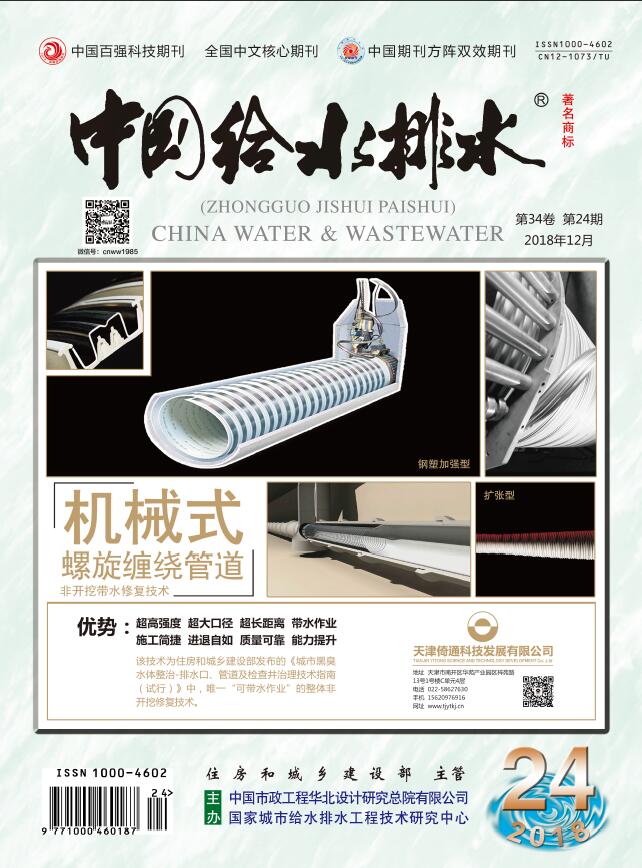CHENLi-hong,BAIHuan-long,WEIZhong-qing,et al.Impact of Secondary Water Supply Pipe Materials on Residual Chlorine Decline and Biofilm Formation on Pipe Walls in Pipe Networks[J].China Water & Wastewater,2025,41(7):47-55.
Impact of Secondary Water Supply Pipe Materials on Residual Chlorine Decline and Biofilm Formation on Pipe Walls in Pipe Networks
China Water & Wastewater[ISSN:1000-4062/CN:12-1073/TU]
volume:
第41卷
Number:
第7期
Page:
47-55
Column:
Date of publication:
2025-04-01
- Keywords:
- secondary water supply; pipe material; residual chlorine decline; microbial community; biomass
- Abstract:
- Insufficient residual chlorine is the primary cause of substandard water quality at the terminus of urban water supply systems. Investigating the impact of pipe materials on residual chlorine decline in secondary water supply networks is crucial for ensuring drinking water safety. A secondary water supply simulation system incorporating five types of pipes, namely stainless steel pipe (SSP), polyethylene-lined steel pipe (PE-SP), polyurethane-lined ductile iron pipe (PU-DIP), cement mortar-lined ductile iron pipe (CM-DIP), and cement mortar epoxy sealing layer-lined ductile iron pipe (EPOXY-CM-DIP), was established and operated for a period of three years. The system simulated the decline of residual chlorine under both static and dynamic conditions with low residual chlorine. Additionally, the microbial community and biomass were analyzed using 16S rRNA gene high-throughput sequencing and real-time fluorescence quantitative PCR (qPCR). Pipe materials significantly influenced the residual chlorine decline coefficient k. The static and dynamic values of k ranged from 0.032 2 h-1 to 1.908 3 h-1. Among different pipe materials, the k values were ranked as follows: EPOXY-CM-DIP>CM-DIP>PU-DIP>PE-SP>SSP. The biomass on the pipe walls was quantified based on the copy numbers of the 16S rRNA gene. The values in descending order were as follows: PU-DIP (7.77×103 copies/cm2), EPOXY-CM-DIP (4.95×103 copies/cm2), PE-SP (2.14×103 copies/cm2), CM-DIP (0.52×103 copies/cm2), and SSP (0.46×103 copies/cm2). Notably, the biomass of PU-DIP was 16.9 times greater than that of SSP. The pipe material significantly influenced the microbial community of the biofilm on the pipe walls. The predominant bacterial strains identified on the walls of PE-SP and EPOXY-CM-DIP were Sphingomonas, while Phreatobacter was found to be dominant on the pipe walls of PU-DIP. Notably, both Sphingomonas and Phreatobacter exhibited resistance to chlorine. Considering residual chlorine decline and biofilm characteristics, SSP is the most suitable material for secondary water supply pipeline, followed by PE-SP.
Last Update:
2025-04-01

